Nothing gets you ready to move like dynamic stretching — large, controlled, repetitive movements that take your joints through a large range of motion.
Depending on your goals and fitness level, these moves can be relatively low intensity (think ankle or wrist circles), high intensity (walking lunges, jumping jacks, and inchworms), or somewhere in between.
The benefits are many. “Dynamic stretching is something I do before all exercise,” says Mike Thomson, CSCS, USATF, a Life Time personal trainer. “It’s good for taking the joints and muscles through their full range of motion,” as well as increasing blood flow and instilling good movement patterns. “It’s also beneficial for the brain to know it’s game time.”
The best time to do dynamic stretching is prior to working out, when you’re trying to ramp up your muscles and nervous system to perform high-tension, high-intensity exercise with a large range of motion. After a few minutes, you’ll feel warmer, looser, more aligned, and ready to attack your workout.
The best time to do dynamic stretching is prior to working out, when you’re trying to ramp up your muscles and nervous system to perform high-tension, high-intensity exercise with a large range of motion.
It’s also a great option whenever you need a shot of energy during the day.
One caveat: Good form is essential. This type of warm-up requires substantial control and stability. In general, that means your hips and shoulders should be square, your neck should be aligned with your spine, your shoulders should be relaxed, and your breath should be smooth and continuous. Twisting, shrugging, bending, and holding your breath are all compensations for limited movement in the target area, explains John Rusin, DPT, CSCS, PPSC.
The first few times you perform the dynamic stretching moves below, use a mirror: They should look and feel smooth and athletic. If you can’t manage these (or any other) dynamic stretches with control and precision, stick to static stretches until you’ve become more comfortable in the correct positions.
2 Dynamic Stretches
Superman Stiff-Leg Deadlift
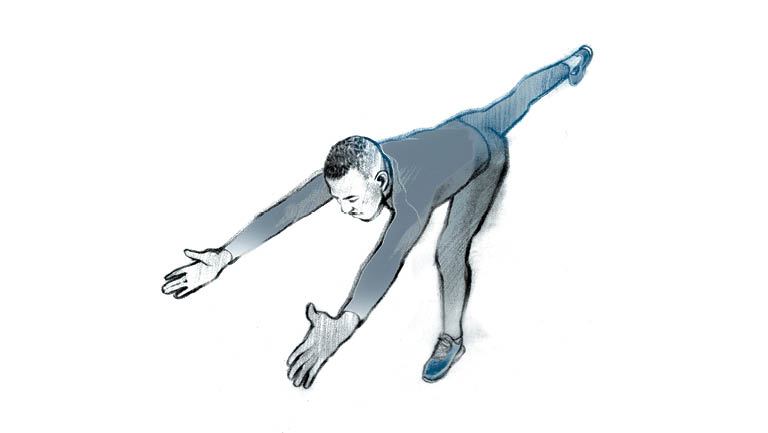
Full Instructions
- Stand upright in a hallway, field, or other open space.
- Step forward with your right foot.
- Keeping your left leg long, your left foot pointed toward the floor, and your lower back in its natural arch, hinge forward on your right hip, extending your arms forward, until your torso, arms, and left leg form a straight line parallel to the floor.
- Pause in the extended position with your right leg slightly bent. You should feel a deep stretch in the hamstrings of your supporting leg.
- Slowly return to an upright position, lowering your arms to your sides.
- Repeat the move on the other side.
- Continue for a total of six to eight reps per side.
Pigeon Walk
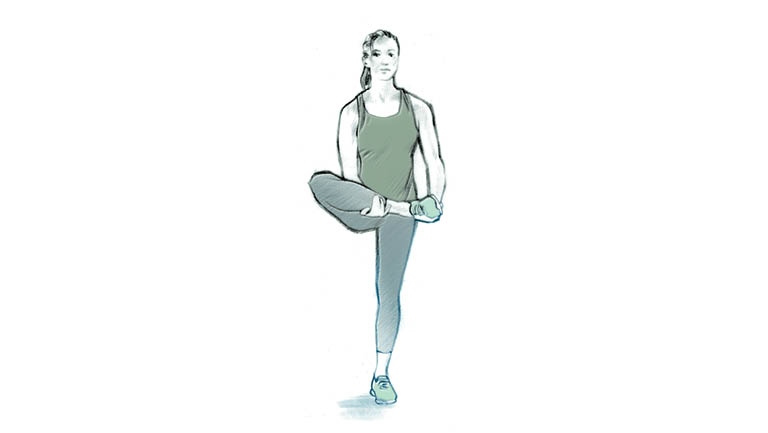
Full Instructions
- Stand upright in a hallway, field, or other open space.
- Step forward with your right foot.
- Keeping your torso upright, raise your left knee to your chest, and take hold of your ankle with your right hand and your knee with your left.
- Flexing your left foot, pull your ankle as close to your belly button as possible, supporting your left knee in your left hand until you feel a deep stretch in your left glute.
- Lower your left foot to the floor, step forward with your right foot, and repeat for a total of six to eight reps per side.
This was excerpted from “Stretch Your Fitness” which was published in the April 2021 issue of Experience Life magazine.
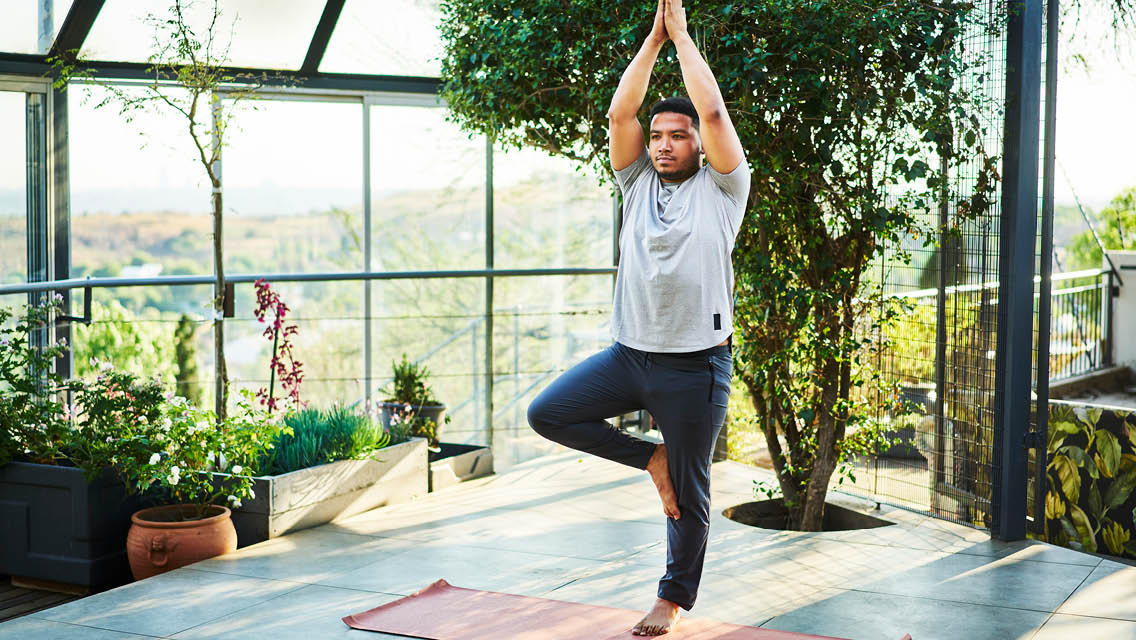

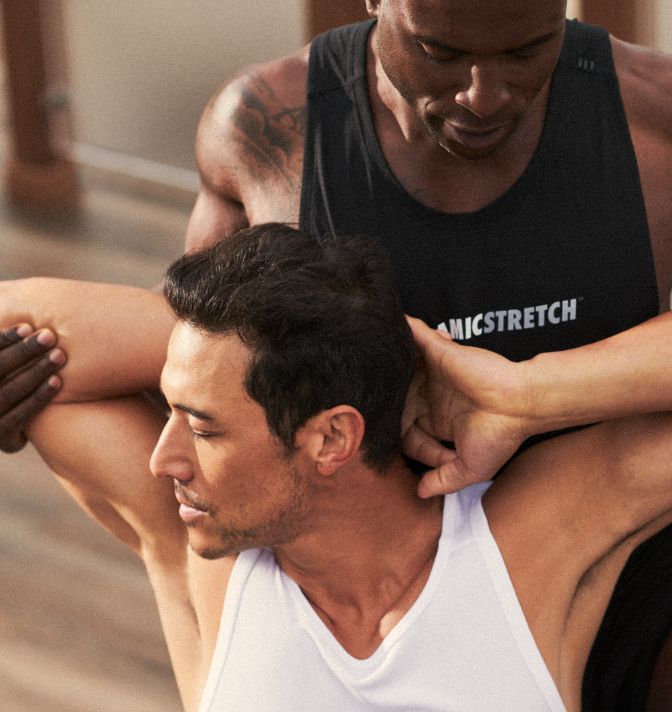

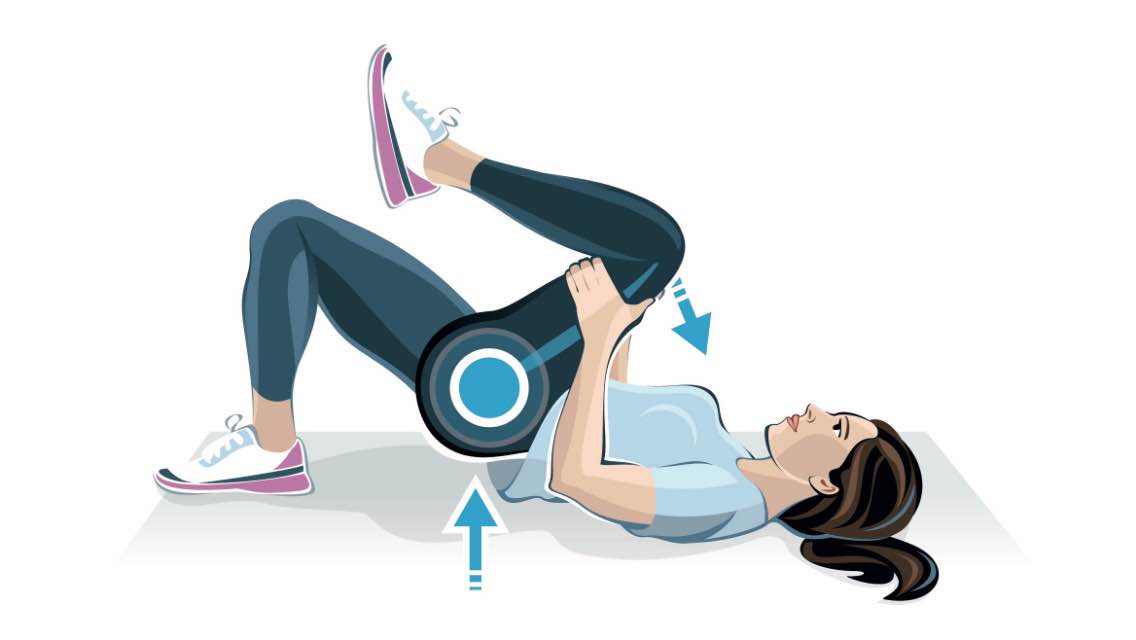
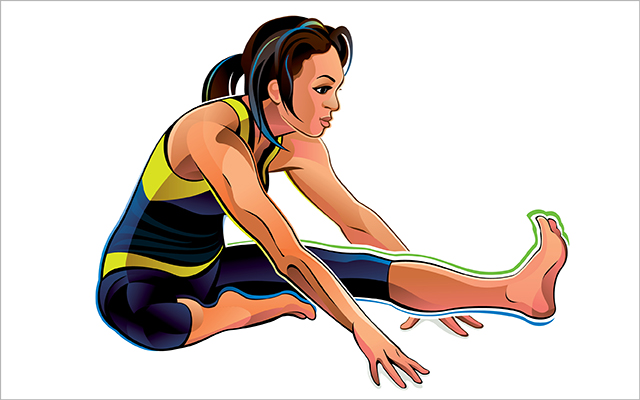
This Post Has One Comment
As a student of Dance in college our classes spent the first Half of an hour stretching head to toe, prior to the bar routines. They would be followed by the rehearsals. At the end of the rehearsal we would again Stretch!!
Stretching could be a “class “ itself to offer to members of Lifetime that I believe would be well attended!